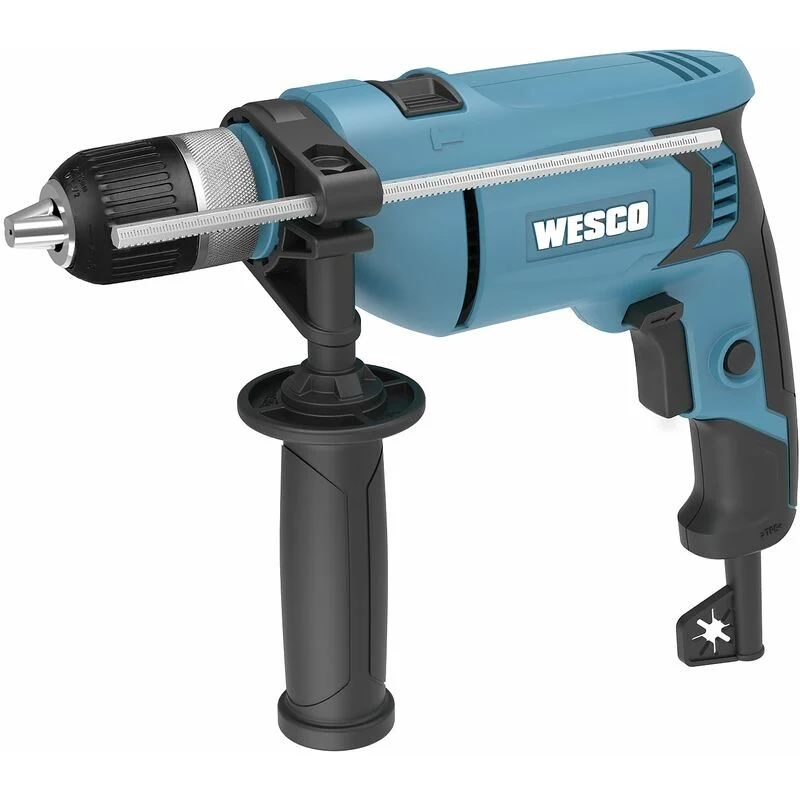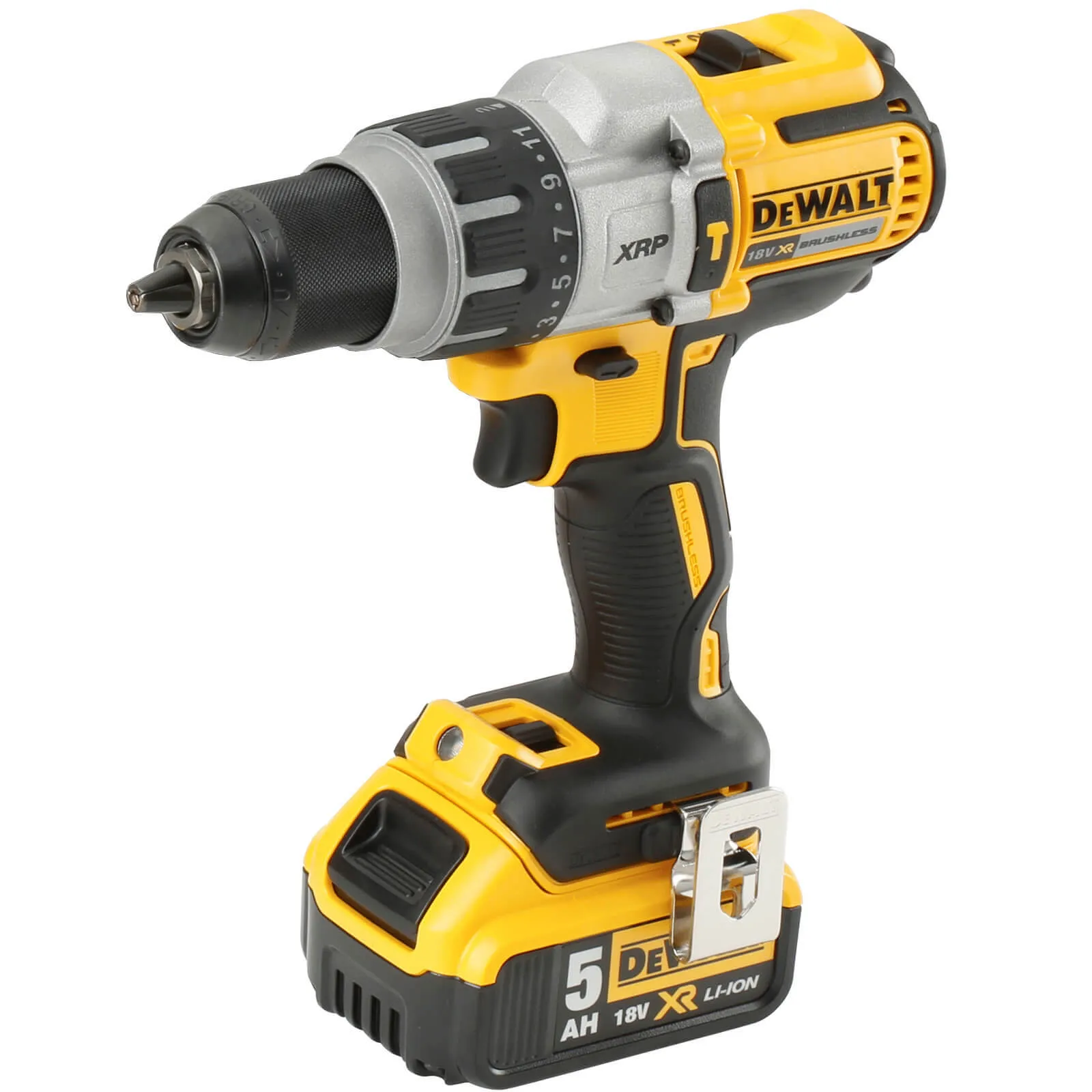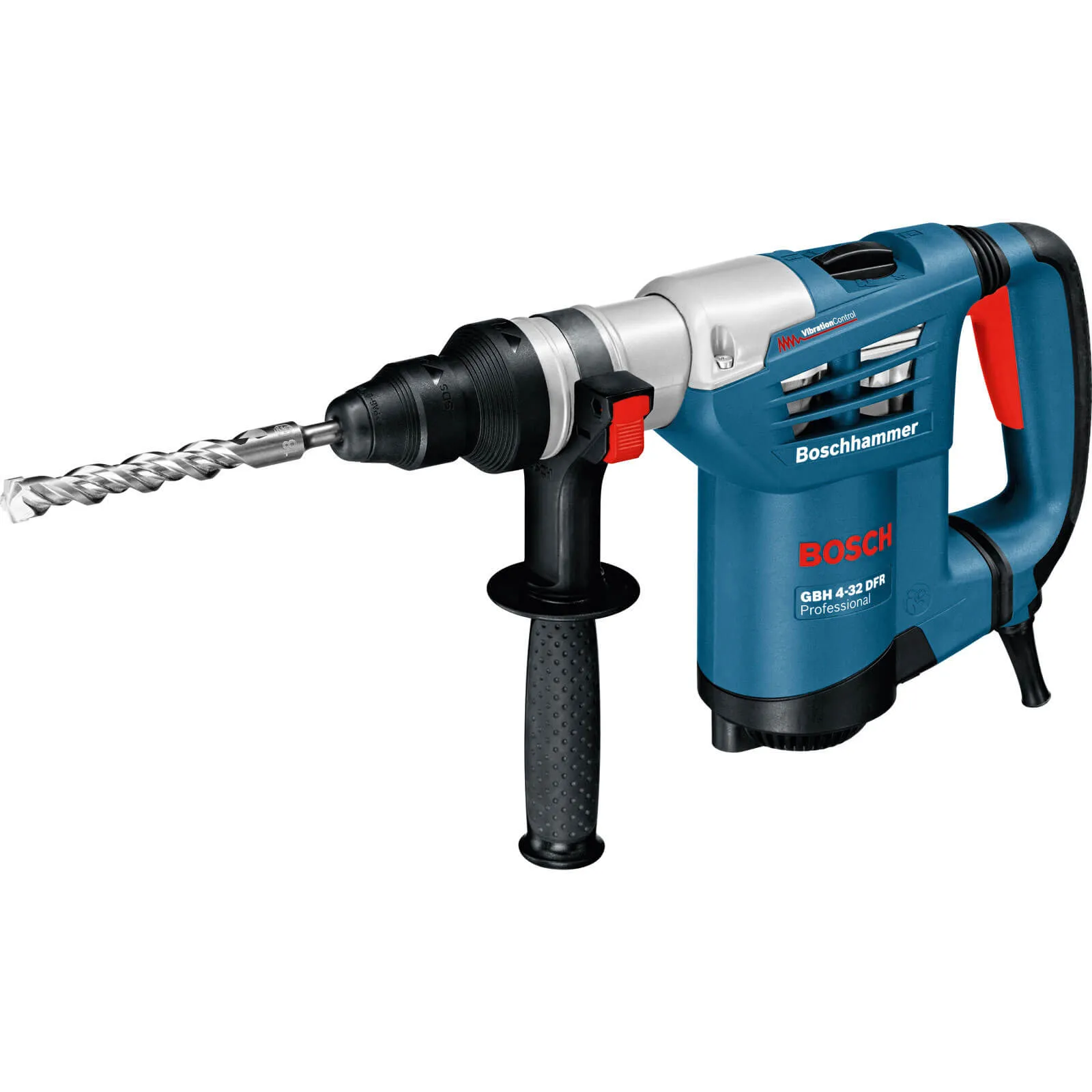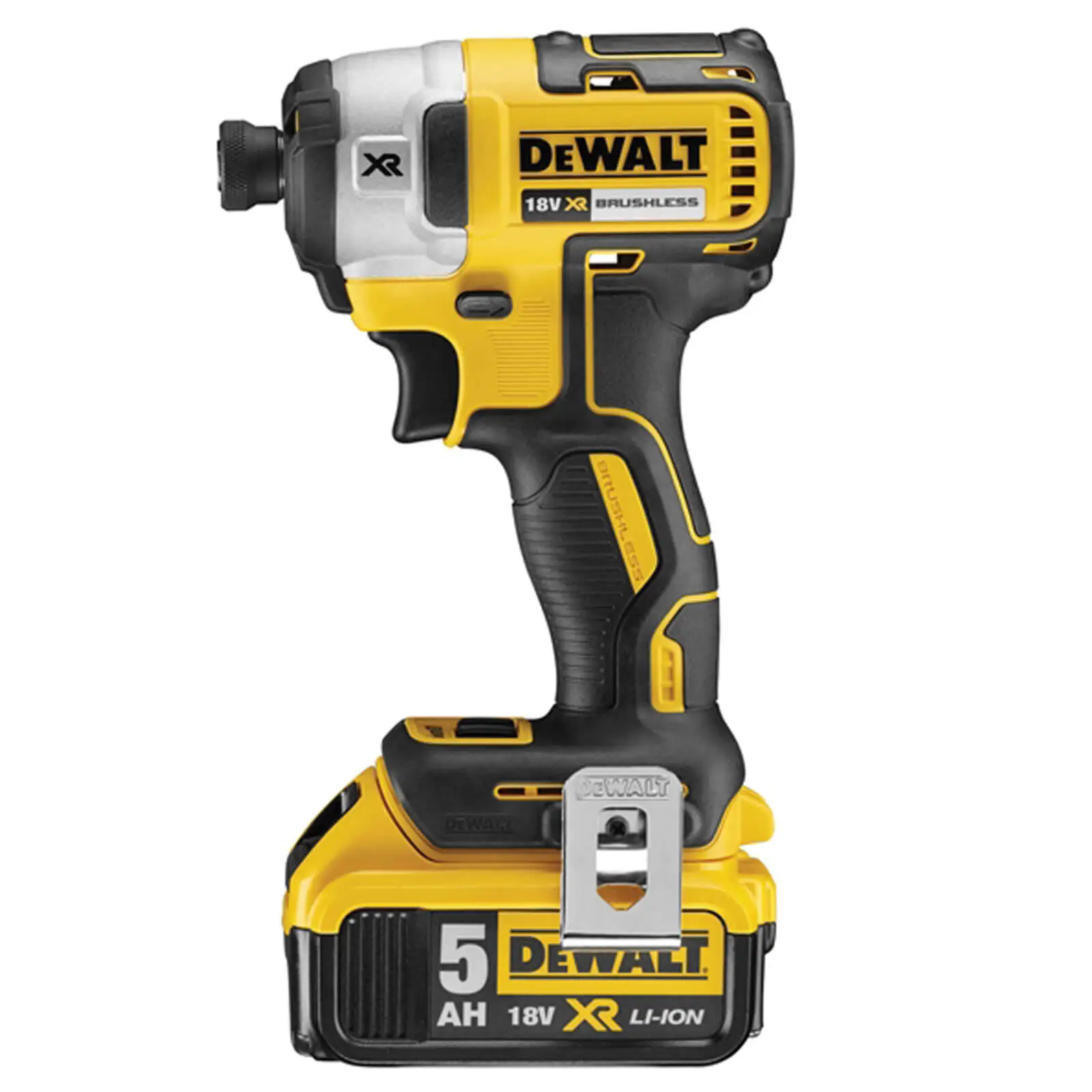If you are considering taking on some do-it-yourself projects or require a dependable tool for your workspace, a drill is an essential device. But, with the variety of selections available, it can be difficult to pick the best drill. One of the key decisions you will have to make is whether to go for a corded or cordless drill. Corded drills have a long history and are known for their power and dependability. However, cordless drills have become popular in the recent years due to their convenience and flexibility. Which one should you choose? In this corded and cordless drill guide, we will illustrate the distinctions between the two types of drills and assist you in making an educated determination. This guide will supply you with the information you need to select the correct drill for your requirements, regardless of if you are a professional contractor or a weekend DIY enthusiast.
Types of Drill Power

Corded – A corded drill is recognizable for the cord it requires, but it can handle more intense activities and won’t give out easily. It is ideal for heavier tasks like utilizing a large hole saw, drilling into cement, and stirring up mud. Even though a corded drill is great to have in certain situations, it’s only necessary 2% of the time. For the remainder of the time, a cordless drill is suficient. Additionally, the power of a corded drill is usually expressed in Amps, the higher the amps, the stronger the drill.

Cordless – Wireless drills are really handy. You don’t have to be concerned with connecting them to a power source since you can take them just about anywhere. Nowadays, these drills are designed to perform almost any task. The motor power, strength of the battery, and battery life have all been greatly enhanced. Wireless drills come in various voltages and amperages, with the lighter ones usually having less power and a shorter battery life.
The best cordless drill according to ReviewFy is DeWalt DCD996P3 18V.
Drill Types
Drill/Driver – Generally, a drill has five features: forward, reverse, clutch, high/low, and variable speed. The forward and reverse function allows users to either insert or remove screws. The clutch will detect the resistance of the screw and will stop when the setting is low. A higher setting will enable the drill to keep going until the user stops or the screw is too tight for the drill. The high and low speed is used for different purposes. Low speed provides more torque to screw or drill bigger holes while high speed is for faster drilling. Variable speed is handy as it permits users to change the speed of drilling by how much they press on the trigger. In some cases, the user needs to drill slowly.

Hammer Drill – A Hammer Drill is equipped with the ability to rotate and pulsate while boring. This characteristic enables it to penetrate concrete without the bit heating up. Although this is an extreme level of power that most homeowners don’t need, it is still a good idea to have the hammer feature as an option. When the situation arises where it is necessary, it can be quite useful and does not add significantly to the cost. The only drawback is the extra weight, but this does not necessitate a major financial investment.

Impact Driver – An impact driver is a sort of cordless drill driver that is equipped with a 1/4” hex bit holder instead of the usual 13mm chuck. These tools are known for their high torque and the level of impact they deliver. They are more powerful than the best combi drills and can be used to drive large screws into hard materials quickly. When picking a cordless impact driver, one should consider the headlength as it affects how easily it can be used in tight, restricted areas. Most budget-friendly models have a single speed, but for more precision and control, two or more speeds are preferable.
Screw Gun/Drywall Drill – A screw gun is tailored to fit the needs of drywall installers or decking builders. It has a precision cone on the front that will automatically shut off when the user has reached the desired depth in the drywall. This is significant since the paper coating on the drywall provides its strength. If the screw is driven too much, the paper will be ruptured, leaving the screw ineffective. The trigger of the tool can remain active as the user shifts from one screw to another given that the head of the screw gun does not move unless pressure is placed on it by pressing against the wall. All these aspects enable the user to hang drywall quickly and accurately.
Cordless Drill Battery Types
Before buying a cordless power tool, customers should understand several terms and features associated with rechargeable batteries. Factors such as the battery’s longevity and how long it can run can be influential in the buyer’s choice (cost being another consideration). The following characteristics can affect the battery’s performance and longevity.
Cycle Life – The longevity of the battery is typically mentioned in terms of the number of charge and discharge cycles it is able to endure before it is no longer able to store or conduct energy. NiCd batteries, for instance, tend to have a life cycle of 1,000 charges or more.
Rechargeable batteries will eventually fail due to a variety of reasons such as age, use, and memory effect, and the type of battery will determine which of these factors will be the most influential.
When selecting a battery, users must decide between long cycle life and other desirable traits, such as the amount of runtime. Li-Ion batteries, for example, have a reduced cycle life but still remain a viable option for those who prioritize extended periods of operation.
Self-discharge – Although all rechargeable batteries are prone to draining while not in use, some decline in charge at a faster rate than others. This isn’t a major concern for individuals who frequently use their cordless tools, but it is significant for those who don’t use them as often. In this case, batteries with a slower rate of power loss are preferable.
Voltage – The voltage of the rechargeable battery pack that a cordless tool uses is the factor that determines how much power the device can hold at once. In general, tools with higher voltages have more power and strength. The battery packs are usually a bunch of individual cells joined together and the total voltage of the cells is the overall voltage of the battery. Different types of batteries, such as NiCD, NiMH, and Li-Ion, have distinct quantities of voltage per cell. For instance, the battery for an 18v cordless drill with a Li-Ion battery is made up of four individual cells because Li-Ion batteries are able to provide between 3.6v-4.2v per cell. The voltage of a single cell in NiCd and NiMH batteries is approximately 1.2v and 1.4-1.6v, respectively.
- light work: 7V – 15V
- medium work: 12V – 18V
- hard work: 18V – 36V
Capacity – The capacity of a battery is commonly denoted in terms of amperage hours (Ah), which is distinct from the current rating of the tool in question. Ah reflects the amount of energy a battery can store as opposed to the current it dispenses while working. To ensure extended use between charges when looking for cordless tools, look for batteries with a higher Ah rating.
Conclusion
In conclusion, when it comes to choosing between a corded and cordless drill, there’s no one-size-fits-all answer. It all depends on your specific needs and preferences. Corded drills offer more power and reliability, making them ideal for heavy-duty work that requires constant use. On the other hand, cordless drills are more convenient and flexible, allowing you to work in areas without access to a power outlet.
Before making a purchase, consider the type of work you’ll be doing, the frequency of use, and your budget. It’s also worth considering the brand and features of each drill, such as the chuck size, speed settings, and battery life. By taking these factors into account, you can make an informed decision and choose the right drill for your needs.
We hope this corded and cordless drill buying guide has provided you with the information you need to make a smart purchase. Whether you’re a seasoned professional or just starting with DIY projects, a high-quality drill is an essential tool that can help you get the job done quickly and efficiently.
FAQ
– DeWalt DCD796 18v XR Brushless Cordless Combi Drill
– Bosch GSR 18 V-60 C 18v Cordless
– Makita DHR202 18v Cordless LXT SDS
– Makita HP488DAEX1 18v G-Series Combi Drill
– DeWalt DCD796P1 18v XR Brushless Combi
Makita dominates DeWalt in terms of rotations per minute (RPM) and rate of impact, while DeWalt has better torque power. Makita’s power is complemented by its lighter weight and smaller size, making it a very effective tool.
As brushless drills lack brushes that cause friction and deceleration, they are more powerful and deliver more torque. Additionally, they can attain faster speeds; roughly 15 to 35 percent more than the performance of the traditional brushed motor drill.
Leave a Reply